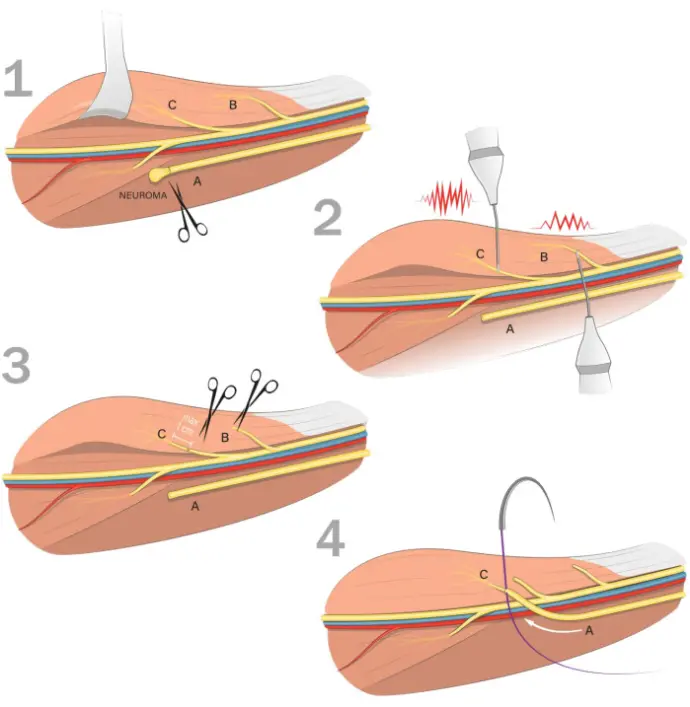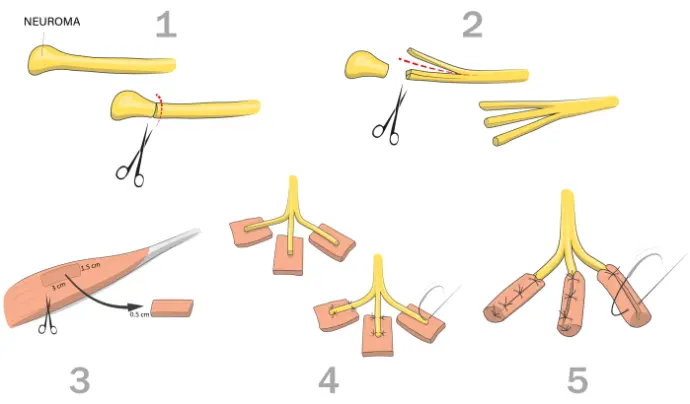Treatments for Phantom Limb Pain
Dozens of treatments for Phantom Limb Pain (PLP) have been proposed over the years, and while they are often claimed to be effective, they are rarely demonstrably so. Here, we provide an overview of known treatments and their clinical evidence, as well as aspects to consider when selecting one. Some approaches to alleviate PLP can also prevent it.




What factors should be considered when selecting a treatment for PLP?
The ideal PLP treatment should be effective, risk free, and inexpensive. Unfortunately, this is hardly the case and one must consider the trade-off of such variables when selecting a treatment.
Effectiveness
Are there meta-analysis or randomized clinical trials concluding long-term effectiveness? Single case studies with no follow-ups indicate that a treatment is promising, but not necessarily a permanent solution. In contrast, large multi-center studies, including appropriate control groups, provide stronger evidence of effectiveness and a better understanding of the associated risks.
Temporality
Attention can drastically change the experience of pain, and many treatments divert attention from pain and thus reduce its intensity. However, once the distraction is gone, the pain tends to come back. It is therefore important to consider the long-term effectiveness of a treatment over months and years, ideally with studies employing long-term follow-ups.
Risks
Side effects or potential complications must be weighted together with the effectiveness and cost of a treatment. Invasive and irreversible procedures are normally riskier that non-invasive and reversable ones.
Reversibility
Is the intervention making a change that cannot be undone? Some surgical procedures such as re-amputation and neve ablation result in permanent changes without necessarily resulting in permanent pain relief, and are normally more expensive.
Cost
Complex treatments tend to be more expensive but not necessarily more effective. Keep in mind that price does not necessarily result in better outcomes when it comes to PLP treatments.
Accessibility
Unfortunately, not all treatments are locally accessible or approved. Keep in mind the long-term support you might need for an specific treatment.
How to select a PLP treatment?
Effectiveness and associated risks are certainly the most important factors to consider when selecting a treatment. Ideally, high effectiveness and low risks. Then non-invasive, reversable, and inexpensive treatments should be attempted first over more invasive, irreversible, and expensive ones.
When evaluating a PLP treatment, ask yourself or your physician questions such as:
- Are there meta-analysis or randomized control trials proving the effectiveness of the treatment?
- How long were the follow-ups in the published studies? How many months or years?
- What are the known risks and side effects?
- Can it be reversed? if not, what can be done if something goes wrong?
Treatments for PLP
Pain is a complex experience involving physiological and psychological factors. The way our body works (physiology), and how we apprise our situation (psychology), can both influence the experience of pain, and both influence each other. Similarly, changes to our body, by invasive or non-invasive procedures, can affect the way our brain processes information causing long-term changes ("plastic") on how we experience pain. So, although pain treatments can be roughly divided in the categories below, they are often interlinked and can complement each other.

Pharmacological
Medication is a pain management strategy that addresses pain as a symptom, but does not treat it as a condition, and therefore is normally not regarded as a long-term solution.

Surgical
These treatments involve physical changes to the body, such as nerve rerouting, that are usually permanent.

Plasticity-guided
These approaches aim to modify the way pain related information is processed by the nervous system, and undo pathological changes that took place due to the amputation.

Psychological
These treatments aim to improve how PLP is experienced and, in turn, strengthen the patient’s ability to overcome or cope with it.
Surgical Treatments for PLP
Historically, surgical treatments have not been recommended to treat PLP due to their limited long-term efficacy. However, newer procedures have shown promising results treating neuroma pain, as well as PLP.
Attention: An amputation or re-amputation to treat pain without proper nerve treatment is not recommended. Avoid procedures in which nerves are not provided with a biological target, as these are known to be ineffective over long periods of time, i.e., pain tends to return after a few months. Such procedures include removing neuromas without nerve transfer.

Plasticity-guided Treatments
The nervous system has a formidable capacity to change and adapt ("neural plasticity"). Unfortunately, sometimes there are undesired changes due to injury which result in painful conditions such as PLP ("maladaptive neural plasticity"). Fortunately, we can take advantage of the same capacity of change to overcome PLP.


Graded Motor Imagery (GMI)
More information to come


Psychological Treatments
Treatments addressing the mind can considerably improve the experience of PLP. Developing or strengthening self-efficacy and reducing catastrophizing are known to improve PLP.


Other psychological treatments
More information to come

